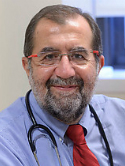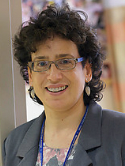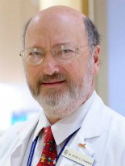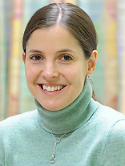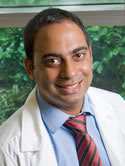Allogeneic hematopoietic stem cell transplantation for pediatric patients with treatment-related myelodysplastic syndrome or acute myelogenous leukemia Journal Article
| Authors: | Kobos, R.; Steinherz, P. G.; Kernan, N. A.; Prockop, S. E.; Scaradavou, A.; Small, T. N.; Shukla, N.; Khalaf, R.; O'Reilly, R. J.; Boulad, F. |
| Article Title: | Allogeneic hematopoietic stem cell transplantation for pediatric patients with treatment-related myelodysplastic syndrome or acute myelogenous leukemia |
| Abstract: | The development of treatment-related myelodysplastic syndrome (tMDS) or treatment-related acute myelogenous leukemia (tAML) is a complication that can occur after chemotherapy or radiation therapy. Eighteen patients with a previous malignancy treated at our institution and three patients with a nonmalignant primary tumor received an allogeneic hematopoietic stem cell transplant (HSCT) on the pediatric bone marrow (BM) transplantation service for the treatment of tMDS/tAML over a 15-year period. Five patients proceeded to HSCT without induction chemotherapy. Fourteen patients received high-dose cytarabine according to the Capizzi II regimen as first-line induction therapy with 13 of them achieving complete remission (CR) or refractory anemia (RA) with persistent cytogenetic abnormalities after this treatment. Two patients received an anthracycline-based induction therapy. Conditioning regimens were selected according to previous therapies: 11 patients received busulfan-melphalan-fludarabine (BU-MEL-FLU), which consisted of busulfan (0.8mg/kg/dose every 6hours ×10 doses), melphalan (70 mg/m 2/dose × two doses), and fludarabine (25 mg/m 2/dose × five doses) for cytoreduction; three patients received a total body irradiation (TBI)-containing regimen; seven patients received myeloablative regimens containing busulfan and/or melphalan and/or thiotepa with doses modified for organ toxicity. Sixteen patients received T cell-depleted (TCD) grafts; four patients received unmodified grafts; one patient received a double-unit cord blood transplantation (DUCBT). Donors included HLA-matched (n = 9), or mismatched (n = 3) related donors, or HLA-matched (n = 4), or mismatched (n = 4) unrelated donors, or DUCBT (n = 1). Disease status at the time of HSCT was: morphologic and cytogenetic CR (n= 12); RA with positive cytogenetics (n = 6); and refractory disease (n = 3). With a median follow-up of 5.9 years (2.2-15.7 years), the 5-year overall survival (OS) and disease-free survival (DFS) rates for the entire group were 61.1% with 12 patients alive without evidence of either primary disease or tMDS/tAML. The OS and DFS rate for the 11 patients who received the BU-MEL-FLU cytoreduction with TCD grafts was 54.5%. DFS was 65.7% for patients in RA or CR at HSCT compared with 0%for patients with >5% residual marrow blasts (P = .015). Nine patients died; the cause of death was relapse of MDS/AML (n = 4) or primary disease (n=2), graft-versus-host disease (GVHD; n = 2), and infection (n= 1). Four patients developed grade II to IV acute GVHD. One patient developed localized chronic GVHD. Our results suggest that the strategy of induction with high-dose cytarabine therapy followed by allogeneic stem cell transplantation improves the overall outcome for patients with tMDS/tAML. In addition, the use of a TCD transplantation with BU-MEL-FLU as cytoreduction may decrease the toxicity of transplantation in heavily pretreated patients without an increase in relapse rate. © 2012 American Society for Blood and Marrow Transplantation. |
| Keywords: | adolescent; adult; cancer survival; child; clinical article; school child; treatment outcome; disease-free survival; survival rate; transplantation, homologous; young adult; acute granulocytic leukemia; overall survival; leukemia, myeloid, acute; busulfan; fludarabine; mortality; disease free survival; cytarabine; drug megadose; follow up; follow-up studies; infection; melphalan; hematopoietic stem cell transplantation; survival time; cord blood stem cell transplantation; myelodysplastic syndrome; whole body radiation; graft versus host reaction; allogeneic hematopoietic stem cell transplantation; neoplasms, second primary; t cell depletion; induction chemotherapy; myelodysplastic syndromes; acute myelogenous leukemia; refractory anemia; therapy-related myelodysplastic syndrome |
| Journal Title: | Biology of Blood and Marrow Transplantation |
| Volume: | 18 |
| Issue: | 3 |
| ISSN: | 1083-8791 |
| Publisher: | Elsevier Inc. |
| Date Published: | 2012-03-01 |
| Start Page: | 473 |
| End Page: | 480 |
| Language: | English |
| DOI: | 10.1016/j.bbmt.2011.11.009 |
| PROVIDER: | scopus |
| PUBMED: | 22079789 |
| DOI/URL: | |
| Notes: | --- - "Export Date: 2 April 2012" - "CODEN: BBMTF" - "Source: Scopus" |
Altmetric
Citation Impact
BMJ Impact Analytics
MSK Authors
Related MSK Work





